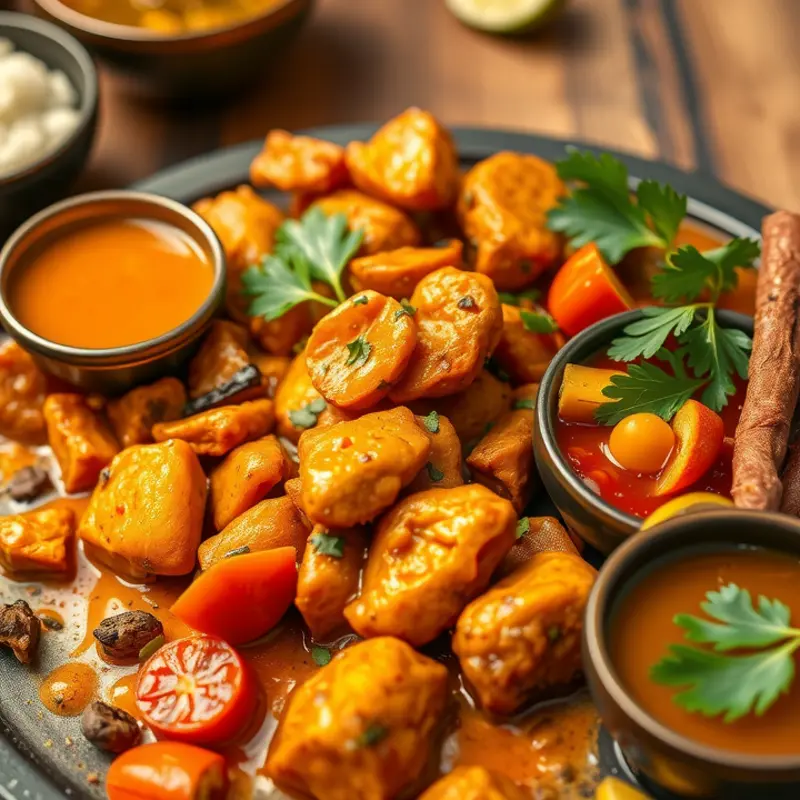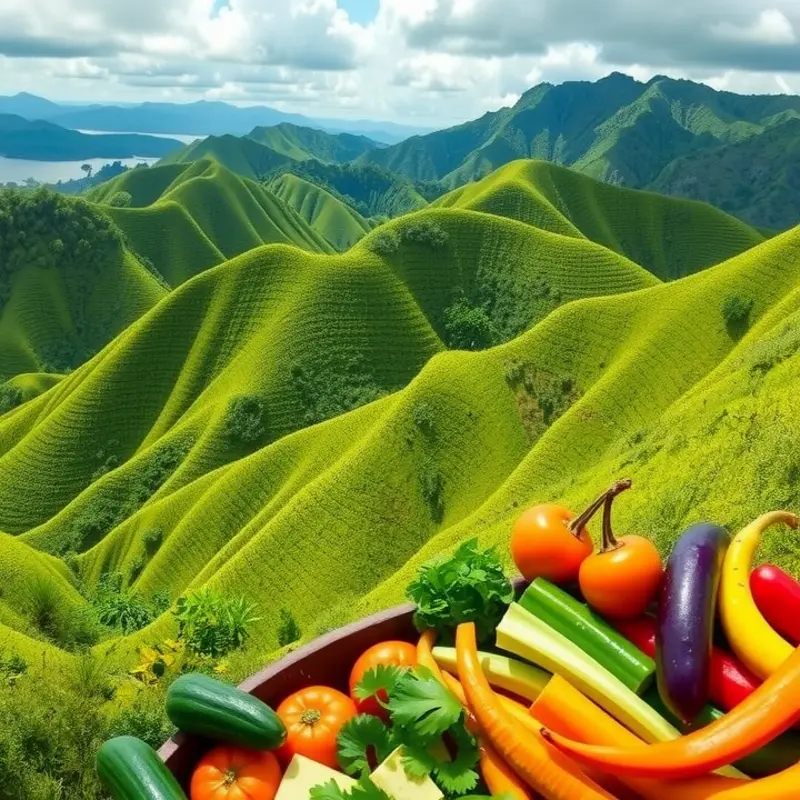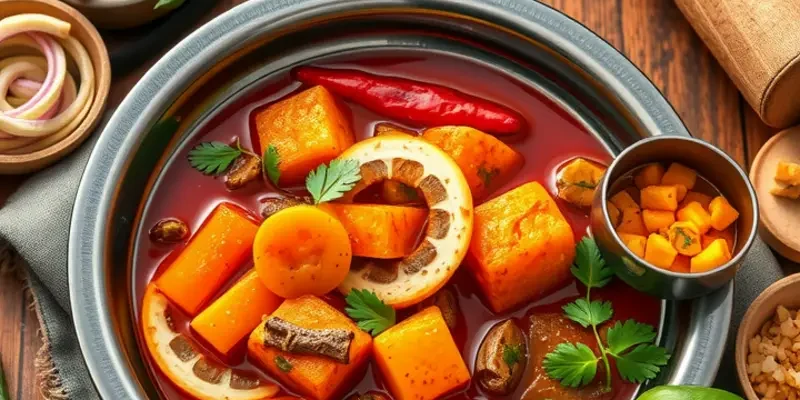Curry, a culinary marvel transcending borders, offers a breathtaking tapestry of flavors and traditions. From the fragrant spices of India to the fiery curries of Jamaica, the world’s love affair with curry is as diverse as the cultures that create them. This exploration invites food enthusiasts and culturally-curious readers to embark on a flavorful journey, uncovering the roots, variations, and unifying essence of curry across the globe.
The Spice of Life: Indian Curries and Their Regional Variations

India’s culinary canvas is a mesmerizing blend of diverse curries, each echoing the bustling marketplaces and tranquil landscapes of its origins. Curry, in the Indian context, is less a specific dish and more a variety of simmered stews and sauces reflecting a tapestry of regional flavors.
Kashmir’s contribution to this spectrum is the robust ‘Rogan Josh.’ Known for its vibrant red color, typically achieved using degi mirch (a type of red chili), this dish epitomizes North Indian aromatic cooking. Traditionally, it features tender pieces of lamb or goat, slow-cooked in aromatic spices like ginger, fennel, and Asafoetida, infused with saffron’s subtle warmth. It is a testament to the region’s Persian influences, blending aesthetics with taste.
Travel southeast to Tamil Nadu, and the landscape of flavors shifts drastically with the ‘Chettinad Curry.’ Hailing from the Chettinad region, this fiery dish is distinguished by its peppery and spicy notes. The Chettiar community, the brains behind this dish, are known for their fiery palate. Their curry uses a medley of roasted spices including star anise, cumin, and coriander, blended with coconut to create a thick, bold sauce. The primary protein might vary, but the intense flavor remains a constant, captivating the adventurous food lover’s palate.
The culinary journey doesn’t end here, as Indian curries continue to reveal depths of vegetarian diversity. Lentils, chickpeas, and vegetables come into play as substantial and protein-rich foundations for a myriad of vegetarian curries, aligning with cultural practices emphasizing vegetarianism as both a lifestyle and a spiritual choice. Dishes like ‘Palak Paneer,’ a creamy spinach and paneer curry, showcases this blend of nutrition and taste, seasoned with garam masala and cumin.
These regional variations ultimately highlight the symbiotic relationship between local ingredients and traditional cooking techniques. India’s extensive use of local produce such as coconuts in the southern coasts or mustard in the eastern regions reflects an environmental consciousness married to epicurean delight.
Curry in India is more than sustenance; it is a social currency, enhancing community and hospitality. Meals are often communal events, symbolic gatherings that bind families and friends through time-honored recipes passed down generations.
For those looking to explore these authentic flavors at home, understanding ingredient substitution is crucial. Interested readers can explore flavor alternatives to maintain authenticity while tailoring curries to their dietary needs. Whether adjusting for health reasons or availability, these adaptations let home cooks savor India’s rich tapestry of flavors.
This deep dive into the heart of Indian curry is just a slice of its expansive world, where each region tells a unique story through its dishes, blending tradition, community, and hospitality into every bite.
From Islands to Cities: The Global Journey of Curry

Curry is more than a dish—it’s a flavorful passport connecting cultures through a shared love for spices and flavors. This journey takes us to Thailand, where curry emerges as a vibrant blend of ingredients. Thai curries, like the renowned Green Curry, balance the fiery kick of fresh green chilies with the soothing sweetness of coconut milk. Fresh herbs such as Thai basil and kaffir lime leaves lend an aromatic depth, transforming each bowl into a sensory orchestra of flavors.
Massaman Curry, another Thai staple, stands out with its fusion of foreign spices and local ingredients. Originating from the influence of Persian traders, Massaman Curry combines warm spices like cinnamon and cardamom with local elements like peanuts and tamarind. The result is a dish that’s both a comforting stew and a reminder of ancient trade routes.
On the other side of the world, in the Caribbean, curry takes on an entirely different persona. Jamaican cuisine, known for its bold flavors, infuses curry with a distinct smoky and spicy character. Here, allspice—often referred to as “pimento”—joins forces with the fiery scotch bonnet pepper, creating a unique flavor profile that reflects the island’s vibrant culture.
Jamaican curry is also heavily influenced by the indigenous cooking techniques that rely on wood smoking, adding a unique warmth and earthiness. This variant often features jerk seasoning, a traditional blend of herbs and spices that enhances the dish’s complexity. Such adaptations highlight curry’s incredible ability to transcend its origins while preserving its fundamental appeal.
The global journey of curry showcases its remarkable adaptability, blending effortlessly into diverse culinary landscapes. Each interpretation adds a local touch, such as the fresh herbs of Thailand or the robust spices of the Caribbean. These elements serve as bridges between cultures, inviting us to explore unique taste experiences while maintaining the heart of curry’s appeal.
For those interested in experimenting with these rich flavors at home, incorporating ingredients like Thai basil or scotch bonnet peppers can truly elevate a dish. Whether you’re seeking to bridge cultural gaps in your kitchen or simply want to try something new, curry offers a delightful way to connect with the world through food.
This testament to curry’s versatility is further explored in various global cuisine articles. Discover more about the influences of trade on culinary traditions in our piece on culinary influences through trade.
Final words
The exploration of global curry traditions reveals a shared love for flavor and community that transcends geographical boundaries. Each region adds its unique signature to this beloved dish, highlighting how it evolves while maintaining its roots. Whether it’s the spices of Indian cuisine or the tropical twists of Caribbean curry, the essence of curry lies in its ability to bring people together over an unforgettable meal. This cultural mosaic of flavors reflects not only the beauty of culinary traditions but also the stories and histories behind each dish. As you delve into these flavors at your local restaurant or kitchen, remember that every bite carries with it a world of cultural significance.








